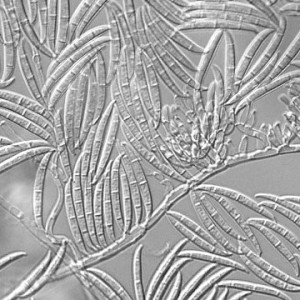 Cellulose and chitin are the most abundant polymers on Earth and their potential is vast for the biofuel industry. Cellulose is the major component of plant cell walls and its degradation into sugars is at the core of biofuels production. Chitin forms much of the shells of crustaceans, exoskeletons of insects and even butterfly wings and has major potential for making bioplastics in a sustainable fashion.
Cellulose and chitin are the most abundant polymers on Earth and their potential is vast for the biofuel industry. Cellulose is the major component of plant cell walls and its degradation into sugars is at the core of biofuels production. Chitin forms much of the shells of crustaceans, exoskeletons of insects and even butterfly wings and has major potential for making bioplastics in a sustainable fashion.
To harness this potential, the polymers need to be broken down. Unfortunately, they are notoriously resistant, requiring the enzymatic power of cellulases and chitinases. We need to be able to identify the most efficient and powerful of these enzymes in a high-throughput manner. However, this can be difficult. The current assays used are not always straightforward; they often require harsh conditions and are not adaptable for high-throughput scale. This may be changing.
Fer rari and colleagues at University of Groningen (The Netherlands) and Beni-Suef University (Egypt) have developed a fast, easy and sensitive assay to detect chitinase and cellulase activity. The assay relies on ChitO (chito-oligosaccharide oxidase), an enzyme from the plant pathogen Fusarium graminearum. ChitO (or a mutant version for cellulase) adds oxygen to the breakdown products of chitinases and cellulases, forming hydrogen peroxide in the process. The production of this hydrogen peroxide can be monitored easily by a simple color change step.
rari and colleagues at University of Groningen (The Netherlands) and Beni-Suef University (Egypt) have developed a fast, easy and sensitive assay to detect chitinase and cellulase activity. The assay relies on ChitO (chito-oligosaccharide oxidase), an enzyme from the plant pathogen Fusarium graminearum. ChitO (or a mutant version for cellulase) adds oxygen to the breakdown products of chitinases and cellulases, forming hydrogen peroxide in the process. The production of this hydrogen peroxide can be monitored easily by a simple color change step.
Compared to the traditional and most used methods to measure these activities, the Schales’ procedure and the DNS method, this assay is more sensitive, has a higher signal intensity and requires fewer and easier handling steps. The assay is a valuable “green” alternative for the high-throughput screening of enzymes involved in bio-refinery processes.
The ubiquitous nature of cellulose and chitin, together with their fundamental role in the biofuels industry, mean this innovative assay could have a material impact on the biorefinery process.
Latest posts by Emma Laycock (see all)
- Celebrating a record year for Biotechnology for Biofuels - 30th July 2014
- A quick green screen for biorefinery enzymes - 15th April 2014
- A greener route for ethylene - 25th March 2014
Comments